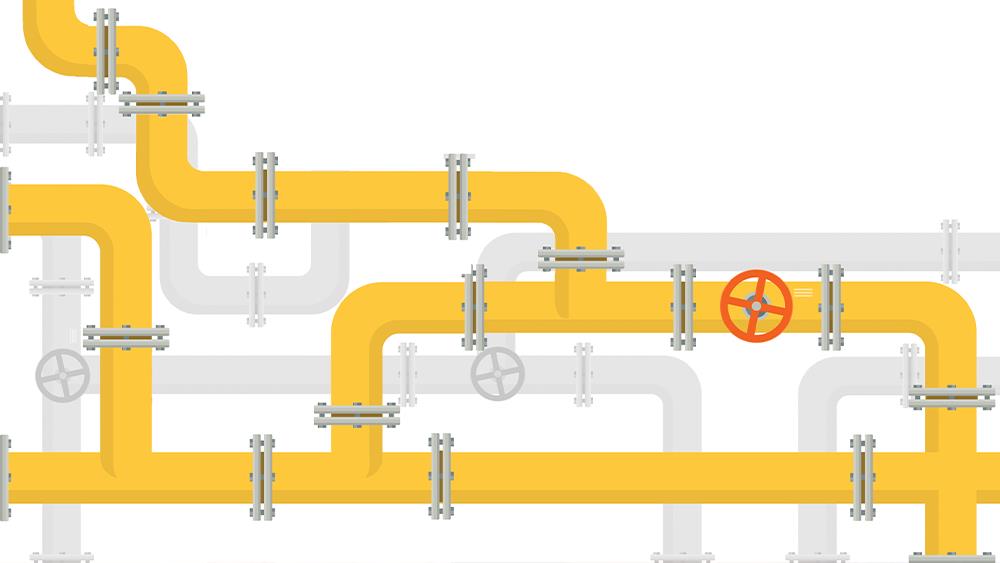

The legionella bacteria is the cause Legionnaires’ disease, a pneumonia-type illness that is potentially life threatening. It is a water-borne bacteria that flourishes in warm water (typically between 20-45°C) and, as such, is a major and very real challenge for the plumbing and heating industry.
In the first 10 months of 2020 alone, according to government figures, there were 295 confirmed cases of Legionnaires’ disease in England and Wales. It is an alarming figure when you consider how avoidable the issue is, providing key water safety steps are taken. This starts with quality installation.
One of the main considerations to avoid contamination is to avoid heat transfer between pipes, or heat gain in voids. The legionella bacteria remains dormant below 20°C and does not survive above 60°C; water between 20-45°C, however, creates the perfect breeding ground. The optimum temperature range for growth is around 32°C to 40°C, when the bacteria starts multiplying every 15 minutes.
Structure and layout
The way the pipes of a system are laid out is one of the most important aspects of preventing legionella growth, although new installations have to be planned with the building structure in mind to avoid compromising the integrity of the structural joists.
Hot and cold water pipes should be separated to prevent the cold water being warmed up by heated pipework. If space does not permit this, then insulation can be implemented to minimise heat transfer between pipes in close proximity.
Pipe insulation
The level of pipe insulation required is dependent on where the pipes are located, as the water within is highly susceptible to changes in weather and outside temperatures.
Cold water storage systems in the roof space, for example, can be affected by solar heat gain. To combat this, cold water pipes should be insulated to ensure the temperature does not rise to between 20-45°C.
It is equally true that cold water pipes can freeze in the colder months. This is where it is crucial that pipes and cisterns are fully insulated and covered with a firm lid, in line with water regulations. This will also help to prevent heat dissipation through floors and ceiling voids, ultimately avoiding excessive energy bills for the homeowner.
It is worth noting that the addition of insulation does nevertheless require consideration of layout, since it is likely to increase the space needed for the pipework. For example, a 20mm diameter pipe could become 50mm when insulated, and this needs to be factored in.
Pipe sizing
Errors associated with the size and capacity of pipework can also contribute to a higher risk of legionella. That is because limescale can provide a home to the bacteria if the flow rate is too low, as the water in the pipework and components isn’t being replenished as often is as it should be.
Installing a pipe that is larger than necessary, or connecting to existing pipework that becomes oversized, may prevent the flow of water from flushing the entirety of the pipe’s interior, meaning legionella or bio-films will be able to deposit in the system.
It is therefore critical that the optimum flow of water is achieved to minimise risk, and correctly sizing pipes is integral to this process. Any build-up of limescale or ‘dead leg’ pipework harbours bacterium. If pipes supplying terminal points are not regularly used, they can become a risk factor.
Further considerations
While it may be tempting to simply store water above 55°C to avoid the risk of legionella developing, this can also have its own problems. It greatly increases the chances of scalding, which is why thermostatic temperature valves are essential in keeping stored water at a controlled temperature when it is discharged from outlets.
Plumbing and heating engineers have always played a frontline role in protecting households from water-associated issues, such as Legionnaires’ disease and scalding.
This is truer than ever today, rendering quality installation and ongoing maintenance vital in the promotion of water safety.
To help with this, CIPHE members can access a wealth of guidance that includes technical support, up to date information, and risk assessments to ensure water safety is prioritised.
If you'd like to keep up-to-date with the latest developments in the heating and plumbing industry, why not subscribe to our weekly newsletters? Just click the button below and you can ensure all the latest industry news and new product information lands in your inbox every week.